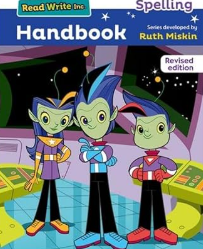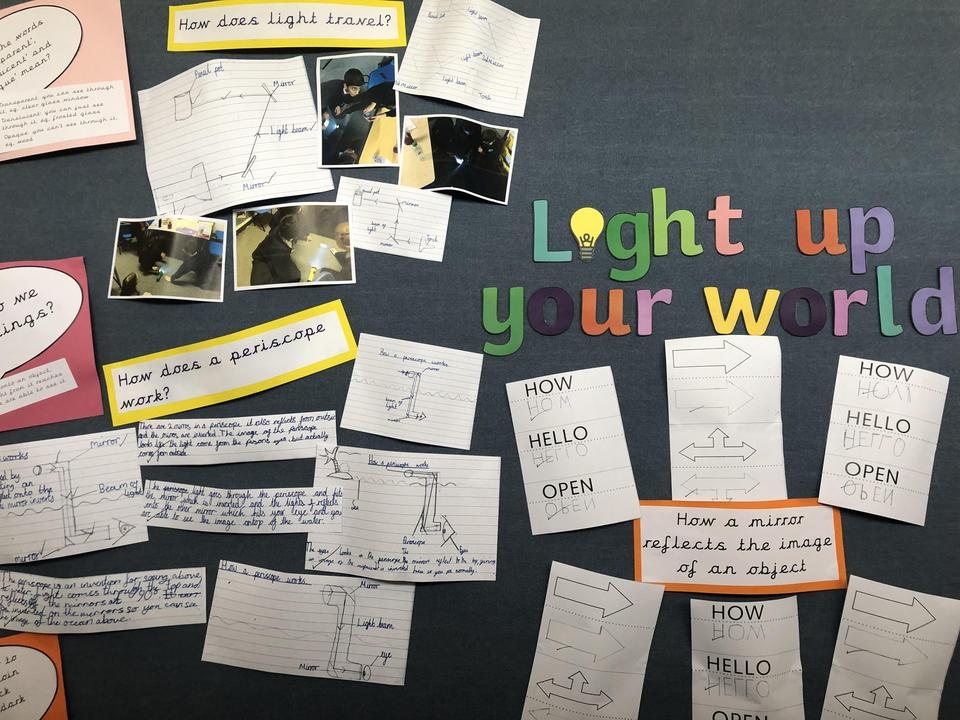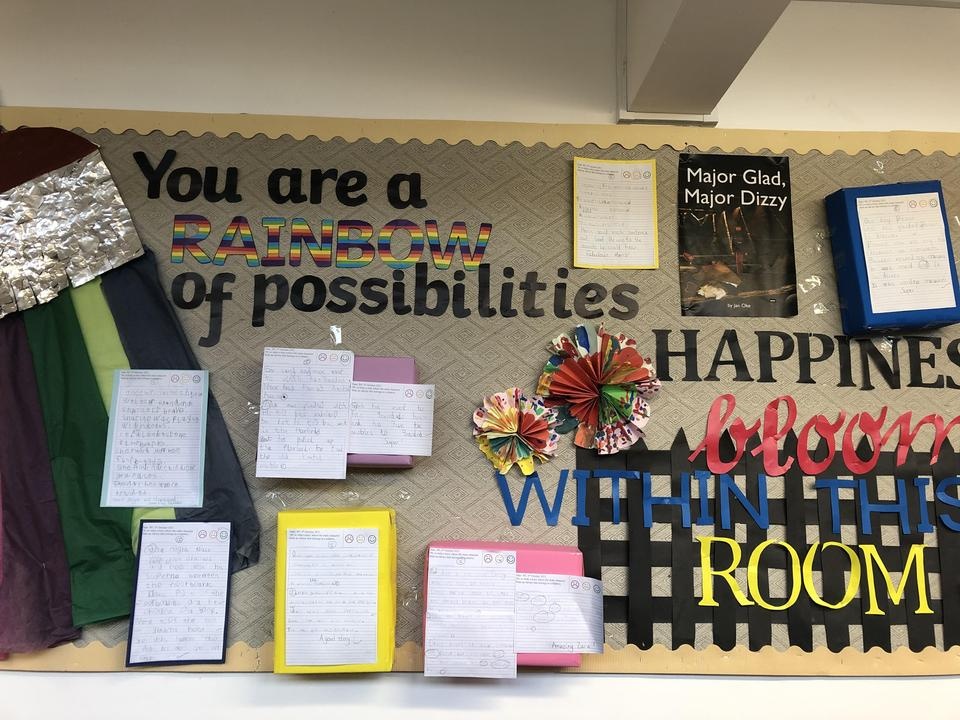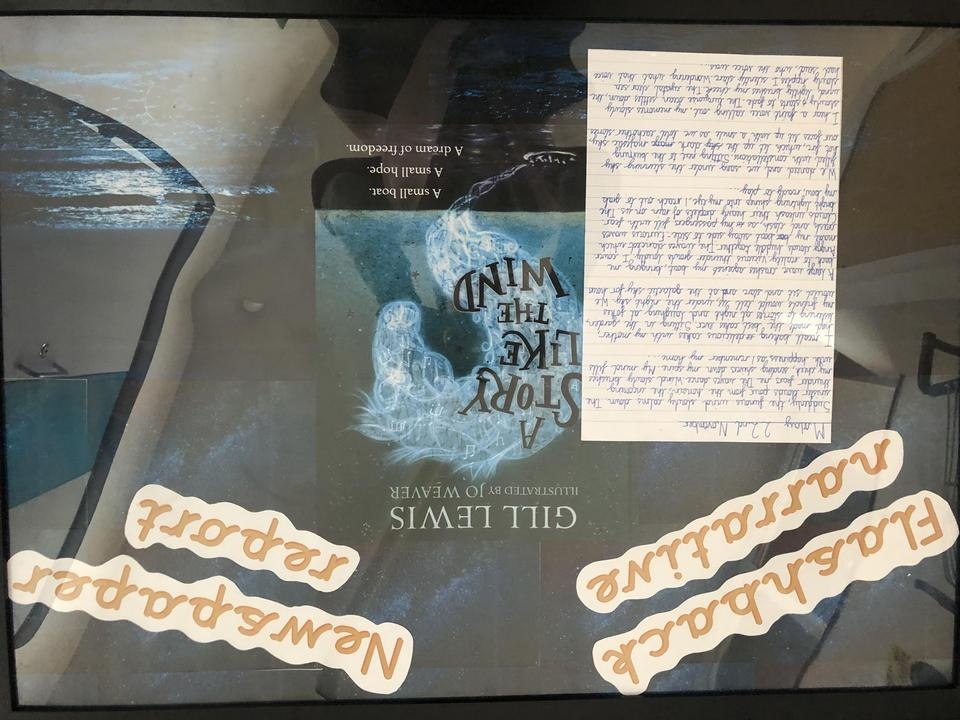Writing
A Vision for Great Writers at St. Mary and St. Joseph’s
1. A Love for Writing
We want our children to:
- Enjoy writing for different purposes and audiences.
- Feel excited to express their ideas through stories, poems, and factual writing.
- See themselves as authors with a unique voice.
2. Strong Writing Skills
We aim for our students to:
- Write fluently with well-structured sentences and paragraphs.
- Use a wide range of vocabulary and grammar accurately.
- Apply spelling, punctuation, and grammar rules confidently.
3. Creativity and Expression
Our children will:
- Develop imagination through storytelling and poetry.
- Use descriptive language to bring their writing to life.
- Experiment with different writing styles and genres.
4. Writing for a Purpose
We will ensure students:
- Write in different formats (letters, reports, narratives, explanations).
- Understand how writing is used in real life (newspapers, blogs, speeches).
- Communicate ideas clearly and persuasively.
How We Will Achieve This
✅ Daily Writing Opportunities – Encouraging writing across all subjects, not just in English.
✅ Exciting Writing Prompts – Using engaging texts, topics, real-world themes, and creative challenges.
✅ Reading to Inspire Writing – Exposing students to high-quality literature to develop their style.
✅ Peer and Teacher Feedback – Creating a positive environment for editing and improving work.
✅ Showcasing Student Writing – Celebrating achievements through school displays, books, and competitions.
✅ Technology Integration – Using digital tools to make writing fun and interactive.
Intent, Implementation and Impact Statement
Our Writing Curriculum
At St Mary and St Joseph's, we have planned our writing curriculum around the texts set out in Literacy Count’s Read to Write units of work. They have been designed by Literacy Counts as a scaffold and a guide for teachers to provide high-quality teaching of writing through high-quality literature. These detailed units centre on engaging, vocabulary-rich texts, with a wealth of writing opportunities within and across the curriculum and also signpost wider curriculum enrichments.
Each unit consists of:
- Clear sequential Episodes of Learning
- Model Texts linked to writing outcomes within the unit
- Vocabulary learning and contextualised spelling, grammar and punctuation
- Wider reading for the wider curriculum
- Curriculum Enrichments
- Explicit links to the national curriculum
Units of Work
Units of work are made up of ‘episodes of learning’.

Vehicle and Model Texts
Each unit of work consists of a fiction and non-fiction writing outcome based on one high-quality children’s book. This is known as the ‘vehicle text’. From this vehicle text, a model text has been written for each of the genres to be taught so that children can study the writing skills and vocabulary used. Crucially, the skills and vocabulary choice can then be analysed for their effect on the reader. The model text is written to incorporate language features and vocabulary for that particular year group and is pitched just above greater depth in order to provide a sufficiently high model of expectations for all pupils.
Progression Overview
Please use the links below to view the progression units for Read to Write throughout school.
End of year expectations
Each year group in the school has a set of End of Year Expectations'in writing. It is hoped that children will achieve these expectations and even move go on to achieve some of those included in the following year group. Click on the links below to view the expectations for your child's year group.
End of Year Expectations
Handwriting
Handwriting
At St Mary and St Joseph's RC Primary School we use the WriteWell handwriting programme to guide children from their first steps in mark making to the development of clear, confident and speedy joined handwriting that can be adapted for a range of purposes.
A developmental approach
As handwriting development can vary greatly from child to child, WriteWell follows a developmental model that allows every child to progress at their own pace, as their handwriting skills flourish. Learning is split into four discrete Stages based on the National Handwriting Association’s eight ‘S Factors for Success’: Shape; Space; Size; Sitting on the line; Stringing together; Slant; Speed and Style. Each S Factor represents a feature of successful handwriting, and the factors are arranged in order of developmental demand.
Each WriteWell Stage is covered in detail, ensuring that learning is firmly embedded before children move on. Stages 1 and 3 require more pupil books than the other Stages because they teach the formation of letters and joins, as outlined below.
Stage 1: Shape - This Stage begins with writing patterns and boosting pencil control in Book 1, before introducing the correct letter formations for lowercase letters in Books 2 and 3, and for capital letters and numbers in Book 4. The lowercase letters are introduced in five motion-inspired ‘letter families’. This helps to focus not only on the letter shapes, but also on ensuring that they are formed in the correct direction, starting and finishing in the right place.
Stage 2: Space, Size, Sitting on the line - Once letter formation is secure, children learn how to arrange their writing on baselines and to form letters of the correct relative size. They also learn about spacing letters within words and leaving appropriate spaces between words.
Stage 3: Space, Stringing together, Slant - Stage 3 is the most detailed Stage in which children are systematically introduced to the basic diagonal and horizontal joins. Throughout this Stage children also build confidence by using to joins to join longer words and to develop a consistent joining style.
Stage 4: Speed, Style - Once joining is secure, the focus shifts to developing a personal style that is fast, fluent and legible and can be adapted for different purposes and tasks. Children are encouraged to adopt a slanted style and to experiment with changes to their joined style, such as looping.
Structured practice
Handwriting is a skill and like all skills it requires intensive practice to achieve fluency. The WriteWell pupil books offer plenty of opportunities for children to practise new learning and careful consideration has gone into all of the activities to limit cognitive demand so that, while drawing on learning from areas such as phonics, spelling and grammar, the emphasis is on handwriting first and foremost.
Each pupil book contains 15 units, together with a child-friendly introduction and at least one longer ‘WriteWell challenge’, giving pupils the opportunity to show off their best handwriting. All the units provide a clear handwriting focus, followed by targeted practice activities that gradually increase in difficulty, progressing from simple ‘Try it’ and ‘Practise it’ exercises involving tracing and copying activities, to more challenging ‘Apply it’ activities that encourage children to use the handwriting focus in a realistic context.
Throughout the programme children are encouraged to practise their handwriting skills through a variety of physical and multi-sensory activities, such as sky writing or making patterns in sand, as well as in their everyday writing by, for example, circling their best letter shape or comparing each other’s writing.
Spelling

We believe that foundations in spelling should be put in place from an early age. Within Reception and KS1 the focus is on phonics and children are immersed in the world of Read, Write Inc. phonics as soon as they enter school. All children within Reception and KS1 access a daily lesson of phonics, where they blend to read but also segment to spell. The children in Years 1 and 2 also learn the common exception word lists for their year groups. As children move towards the end of KS1 the focus changes from phonics to the learning of spelling rules and strategies.
Within KS2 key spelling strategies and rules are taught within the classroom at least 3 times per week using the Read, Write Inc spelling scheme. Children may receive weekly spelling lists or individualised spelling lists to learn at home. Alongside learning spelling rules and strategies Years 3/4 and Years 5/6 are also expected to learn the word lists as stated in the national curriculum. This is supported through spelling games to provide an interesting and engaging approach to learning spellings. Spelling is important to all children and it is essential that they are given every opportunity to embed key spelling rules so that they are then able to apply them to their own writing. When looking at model texts in writing sessions, spellings are highlighted spelling rules are considered. Spelling is a non-negotiable at St Mary and St Joseph’s School.
Why is Read Write Inc. Spelling so successful?
- The programme is constructed around direct teaching and consolidated through partner practice.
- Snappy 15-minute lessons mean you can fit the programme into your timetable when it suits you.
- Children learn the routines for each spelling activity so they can then focus on what matters most – learning to spell.
- Little planning is needed. Teachers use an engaging Practice Zone to teach new concepts.
- Children practise using partner and team practice, for example, the popular ‘Four-in-a-row’ game and ‘Team Teach’.
- Assessment is built into each weekly unit so you know which spelling concepts children need to revise.
The programme’s core activities teach:
- alternative spellings of vowels
- alternative spellings of consonants
- homophones
- the impact of adding prefixes and suffixes to root words
- spelling plural nouns
- ‘silent’ letters
- unusual letter strings
- word families.
It includes all the spelling requirements of the English National Curriculum.
Celebrating our writing in school
- Online Grammar Dictionary Use the dictionary to find the meaning of many terms e.g. nouns, plural nouns, adjectives.
Writing News








